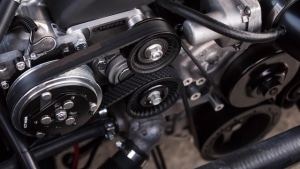The Art of Engine Overhaul: A Detailed Guide
 he heart of every car is its engine. Over time, wear and tear can take its toll, leading to decreased performance and efficiency. An engine overhaul breathes new life into this vital component, restoring its former glory. But what does an overhaul involve? Let’s explore the art and science behind it.
he heart of every car is its engine. Over time, wear and tear can take its toll, leading to decreased performance and efficiency. An engine overhaul breathes new life into this vital component, restoring its former glory. But what does an overhaul involve? Let’s explore the art and science behind it.
What is an Engine Overhaul?
At its core, an engine overhaul is a comprehensive process that involves disassembling, cleaning, inspecting, repairing, and reassembling the engine. It’s about restoring and rejuvenating, not just patching up.
When is an Overhaul Needed?
Engines don’t come with expiry dates, so how do you know when it’s time for an overhaul?
Decreased Performance: If your car isn’t as responsive or powerful as it used to be, an overhaul might be in order.
Excessive Oil Consumption: Burning too much oil is a sign that the engine’s internal components might be worn.
Noise and Vibration: Strange sounds or unusual vibrations can signal internal engine damage.
Mileage: High-mileage engines, especially those over 200,000 miles, might benefit from an overhaul, even if no immediate issues are evident.
The Overhaul Process: Step by Step
Diving into an engine overhaul is no small feat. Here’s a breakdown of the typical steps:
- Disassembly: The engine is removed from the car and taken apart. Every component is meticulously labeled to ensure proper reassembly.
- Cleaning: Decades of grime, oil, and dirt are removed. This not only ensures better inspection but also improves the efficiency and lifespan of the engine.
- Inspection: Each part is scrutinized for wear, damage, and deformities. This step determines which components can be reused and which need replacement.
- Repair & Replacement: Damaged parts are either repaired or replaced. This could involve machining parts to restore their original specifications or buying new components.
- Reassembly: With all parts cleaned, repaired, or replaced, the engine is reassembled. Precision is key here, ensuring every component fits perfectly.
- Testing: Before reinstalling, the overhauled engine is tested to ensure it runs smoothly and efficiently.
The Benefits: Why Opt for an Overhaul?
Why go through such an intensive process? Here are the perks:
Cost-Effective: In many cases, overhauling an engine is cheaper than buying a new car or engine.
Environmental Impact: Restoring an engine reduces the need for new parts, making it a greener option.
Extended Lifespan: An overhaul can add many more years to your engine’s life, ensuring you get the most out of your investment.
Choosing the Right Professionals
An engine overhaul is an intricate job, demanding expertise and experience. Always opt for professionals with a proven track record. Their knowledge can make the difference between a rejuvenated engine and a costly mistake.
Conclusion
An engine overhaul is more than just mechanical restoration; it’s an art form that balances precision, knowledge, and craftsmanship. By understanding the process and its benefits, car owners can make informed decisions, ensuring their beloved vehicles remain on the road for many more adventures.
Ever had your engine overhauled? Share your experience in the comments! Your insights might help someone else decide if an overhaul is right for their vehicle. Keep cruising, and may your engines always purr with perfection!
